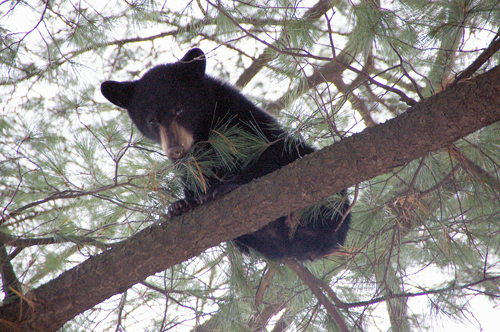Be cautious well into the new year

The welcome sign at Lake Placid's large municipal parking lot on Main Street Tuesday, July 28, 2020 reminds visitors of COVID-19 precautions they should be taking during the coronavirus pandemic. (News photo — Andy Flynn)
A year ago, an observer holding on to his sense of humor through the first year of the coronavirus pandemic said that 2020 was like stopping on the curb before crossing a street, looking carefully both ways, then stepping out — and getting hit by an airplane. In 2021, it was more like the movie “Groundhog Day,” getting hit over and over, not escaping the nightmare.
In early 2021, with the promise that the pandemic would subside after the COVID-19 vaccines rolled out, we’ve experienced many highs and lows — the “yes you can, no you can’t” messages from government officials, pandemic burnout, denial that this worldwide public health emergency is not yet over, and new variations of the virus. (At least we’re all learning the Greek alphabet, right?)
With more than 816,000 people dead from COVID-19 in the United States — as of Dec. 29, according to the Centers for Disease Control and Prevention — there are still lessons to be learned. Yet many people refuse to learn them. In a country where COVID-19 vaccinations are readily available, millions of Americans refuse to get “jabbed,” as the British say. Yet there are millions of people in poorer countries of the world who don’t even have access to the vaccinations.
On Dec. 29, the Associated Press reported that new cases of COVID-19 in the U.S. hit the highest level on record: more than 265,000 per day on average. The highly contagious omicron variant is mostly responsible for the surge. The previous mark was 250,000 cases per day.
As of Dec. 29, more than 205 million Americans were fully vaccinated (62%), and more than 67 million had received their booster shots (33%), according to the CDC.
A year ago, COVID-19 deaths topped 385,000 in the U.S., and we were certain that the war against the virus would continue long into the new year. We were right. In fact, as COVID cases continue to rise in our region, the pandemic is even worse locally than it was a year ago — even with vaccinations.
During early 2021, analysts at the University of Washington’s Institute for Health Metrics and Evaluation, said that by April 1, COVID-19 could claim the lives of 502,000 Americans. They were short by 50,000.
In their Dec. 22 report, the IHME scientists said that infections will probably increase, mainly due to the new omicron variant, which is more transmissible, more likely to be asymptomatic and much less likely to result in hospitalization or death. They expect about 3 billion or more infections over the next few months. “To put that in context, that’s as many infections as we’ve seen in the entire pandemic so far,” they said.
The IHME report also says that fewer infections are likely to be detected and overall hospitalizations and deaths will be lower than previous surges, as omicron’s infection-hospitalization and infection-fatality rates are much lower than other variants like delta.
IHME scientists say there are three ways people can protect themselves against COVID-19:
1. Get a third dose of the vaccine if you already have two, or get a first dose if you haven’t yet.
2. Wear a high-quality mask (KN95 or N95).
3. If you are at high risk due to age or comorbidities, avoid indoor gatherings.
“Don’t leave the house” was not on their list of recommendations, and it’s not feasible for long lengths of time anyway. Therefore, we have to live with the virus while being in public. That means protecting ourselves … and others. People who won’t get vaccinated forget the part about protecting others. It’s not just about you.
Let’s take care of ourselves — and others — in 2022 and do what we can to end this pandemic.



